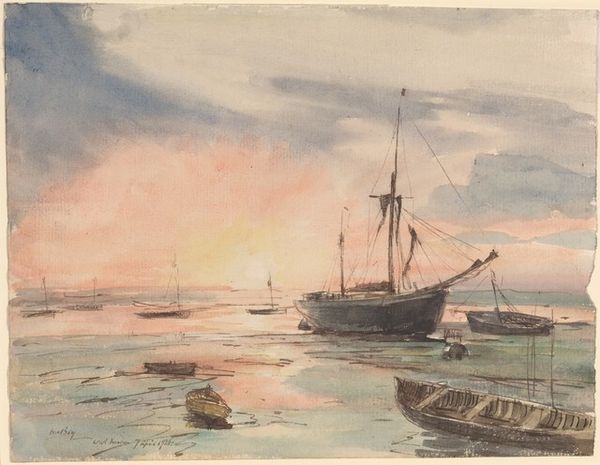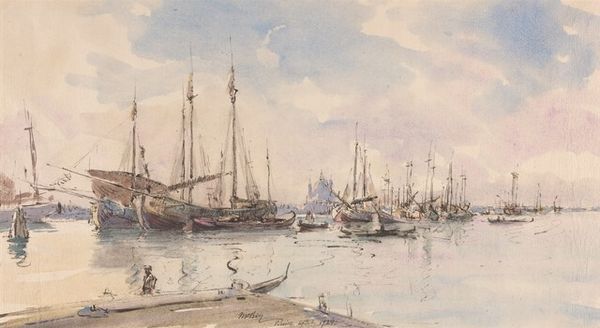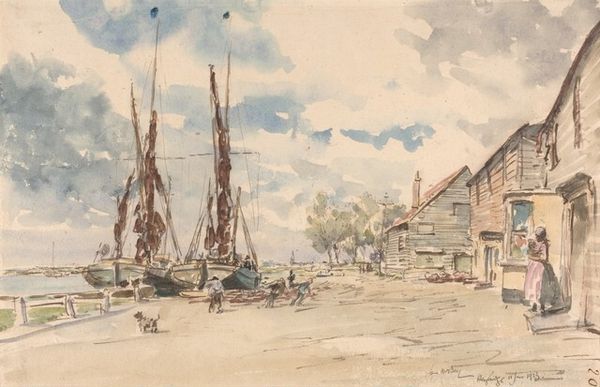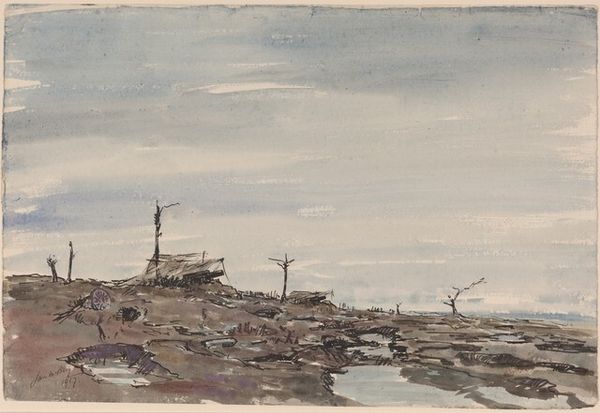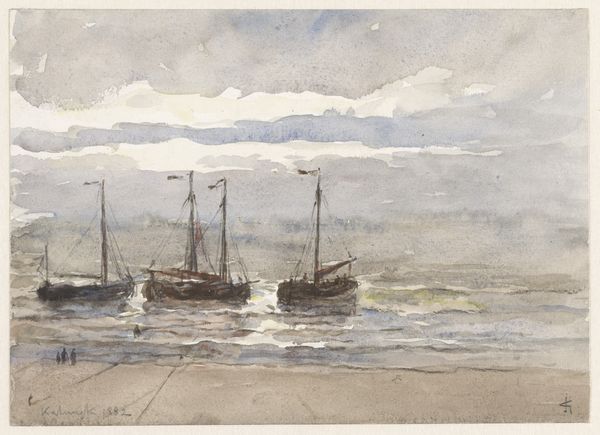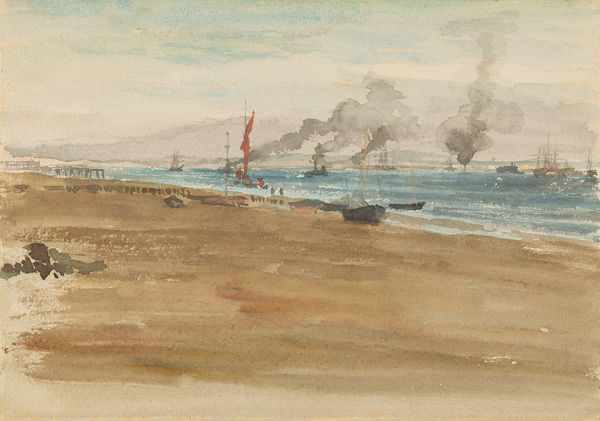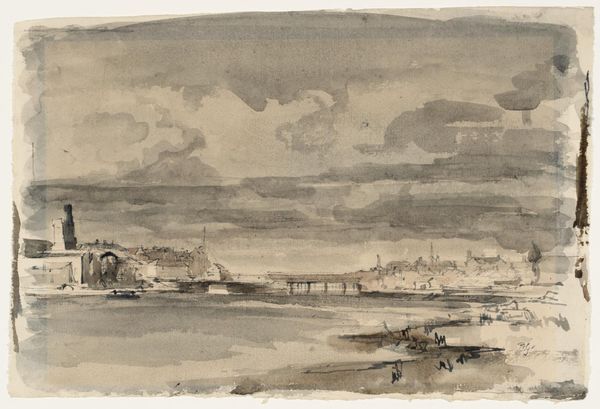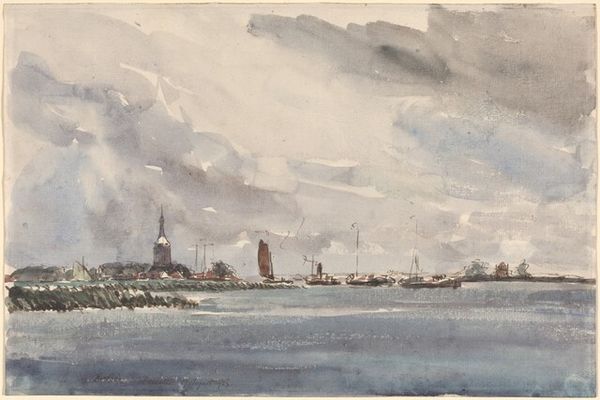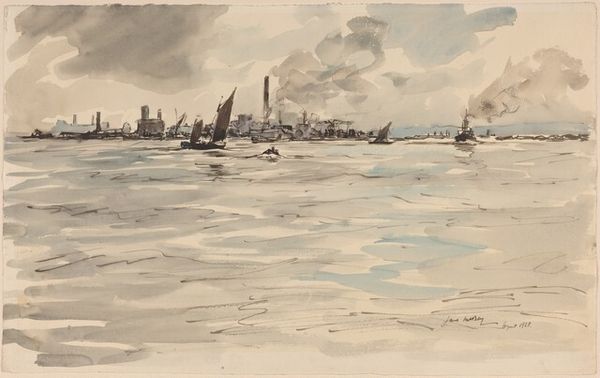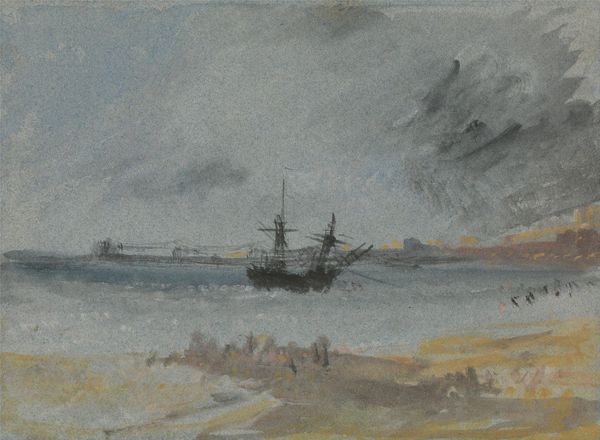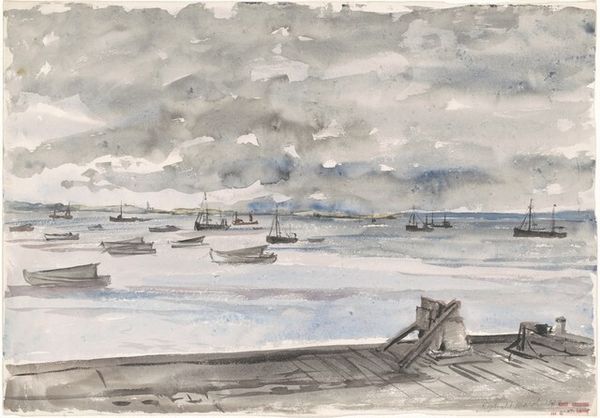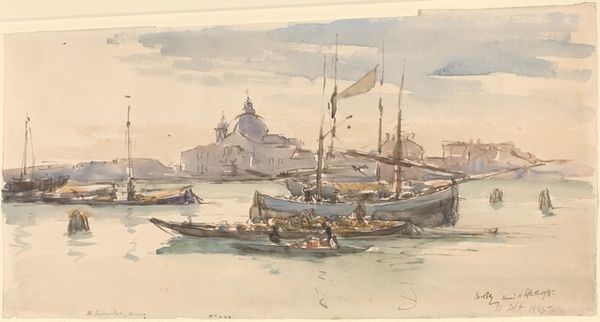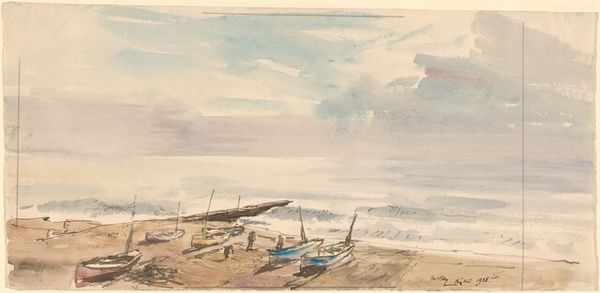
drawing, painting, plein-air, watercolor
#
drawing
#
painting
#
plein-air
#
landscape
#
etching
#
watercolor
#
cityscape
#
watercolour illustration
#
watercolor
#
realism
Dimensions: overall (approximate): 29.7 x 44.4 cm (11 11/16 x 17 1/2 in.)
Copyright: National Gallery of Art: CC0 1.0
Editor: We're looking at "Gravesend," a 1928 watercolor by James McBey. It depicts a harbor scene, with lots of boats and a hazy sky. It feels very tranquil, almost dreamlike. What do you see in this piece, Professor? Curator: Tranquility, yes, but also a potent depiction of labor and maritime infrastructure. Think about Gravesend in 1928; it was a critical port, deeply embedded in global trade networks shaped by colonial histories. Those boats aren't just picturesque; they're implicated in the movement of goods and, often, the exploitation of resources and people. How does the watercolor medium itself contribute to this reading, in your opinion? Editor: I guess I hadn’t really considered the historical context. The watercolor… it’s light and airy, almost obscuring the details. Does that relate to ideas about obscuring labor or even colonial impact? Curator: Precisely! The "washy" aesthetic softens the edges, perhaps mirroring a kind of societal blindness towards the harsh realities of empire and the labor that sustained it. The loose brushstrokes, almost impressionistic, subtly mask the intense industry of a working port. This approach asks us to consider not just what is visible, but also what the artist chooses to leave out – what histories are veiled by this seemingly idyllic scene. Where do you think race and class figure in here? Editor: Wow, I never would have seen that on my own. It makes you think about what stories are left untold when looking at these seemingly peaceful scenes. I’ll never see harbors the same way. Curator: Exactly! By considering these paintings through the lens of historical power dynamics, we gain a far richer understanding of the artist's choices and the world they inhabited. It is always essential to think about race and class.
Comments
No comments
Be the first to comment and join the conversation on the ultimate creative platform.
